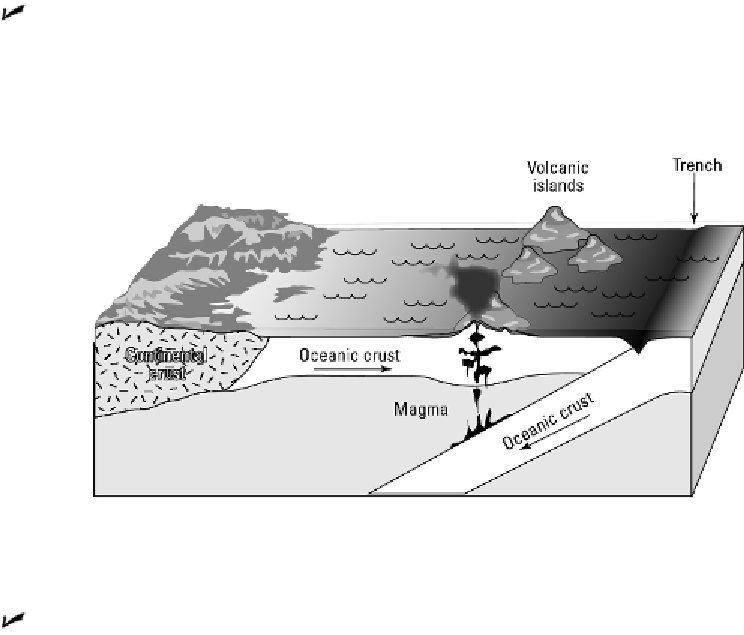Geology Reference
In-Depth Information
Volcanic arcs
As a plate is subducted and partially melts, a chain of volcanoes appears at the surface
of the overlying plate. A volcano chain is called an
arc.
Two types of volcanic arcs are
commonly recognized:
Island arcs:
Volcanic island arcs are created when two oceanic plates collide and
one is subducted under the other. As the subducting crust is partially melted and
the magma rises, it breaks through the crust of the overlying plate, creating a
chain of volcanic islands that are roughly parallel to the edge of the subducted
plate. Figure 10-2 illustrates a cross-section view of how this process occurs.
Figure 10-2:
A
cross-section view
of how a volcanic
island arc is cre-
ated.
Examples of volcanic island arcs created from this process include the Aleutian Is-
lands in the North Pacific Ocean and the Marianas Islands in the South Pacific
Ocean.
Continental margin arcs:
When a continental plate collides with an oceanic plate,
the oceanic plate is subducted beneath the continental plate (I explain why in
Chapter 9). The magma rises through the overlying continental crust and creates a
continental margin arc:
a string of volcanoes along the continental margin, or edge.
Figure 10-3 illustrates a cross-section view of how this process occurs.
Examples of continental margin arcs include the Cascade Mountains along the
western coast of North America and the Andes Mountains of South America.
Figure 10-3:
A
cross-section view
of how a contin-
ental margin arc is
created.





